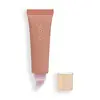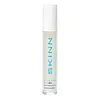What's inside
What's inside
 Key Ingredients
Key Ingredients

 Benefits
Benefits

 Concerns
Concerns

 Ingredients Side-by-side
Ingredients Side-by-side

Hydrogenated Polyisobutene
EmollientPolyisobutene
Diisostearyl Malate
EmollientBis-Behenyl/Isostearyl/Phytosteryl Dimer Dilinoleyl Dimer Dilinoleate
EmollientHydrogenated Styrene/Isoprene Copolymer
Cera Microcristallina
Emulsion StabilisingEthylene/Propylene/Styrene Copolymer
Aroma
Pentaerythrityl Tetra-Di-T-Butyl Hydroxyhydrocinnamate
AntioxidantPrunus Avium Seed Oil
EmollientTocopheryl Acetate
AntioxidantPersea Gratissima Oil
Skin ConditioningSqualane
EmollientHelianthus Annuus Seed Oil
EmollientEthylhexyl Palmitate
EmollientButylene/Ethylene/Styrene Copolymer
Tribehenin
EmollientTocopherol
AntioxidantSorbitan Isostearate
EmulsifyingAluminum Hydroxide
EmollientLactic Acid
BufferingAnthemis Nobilis Flower Extract
MaskingPalmitoyl Tripeptide-1
Skin ConditioningCitral
PerfumingLinalool
PerfumingLimonene
PerfumingCI 77891
Cosmetic ColorantCI 77491
Cosmetic ColorantCI 77492
Cosmetic ColorantCI 77499
Cosmetic ColorantCI 15850
Cosmetic ColorantHydrogenated Polyisobutene, Polyisobutene, Diisostearyl Malate, Bis-Behenyl/Isostearyl/Phytosteryl Dimer Dilinoleyl Dimer Dilinoleate, Hydrogenated Styrene/Isoprene Copolymer, Cera Microcristallina, Ethylene/Propylene/Styrene Copolymer, Aroma, Pentaerythrityl Tetra-Di-T-Butyl Hydroxyhydrocinnamate, Prunus Avium Seed Oil, Tocopheryl Acetate, Persea Gratissima Oil, Squalane, Helianthus Annuus Seed Oil, Ethylhexyl Palmitate, Butylene/Ethylene/Styrene Copolymer, Tribehenin, Tocopherol, Sorbitan Isostearate, Aluminum Hydroxide, Lactic Acid, Anthemis Nobilis Flower Extract, Palmitoyl Tripeptide-1, Citral, Linalool, Limonene, CI 77891, CI 77491, CI 77492, CI 77499, CI 15850
Hydrogenated Polyisobutene
EmollientRicinus Communis Seed Oil
MaskingCera Alba
EmollientEthylene/Propylene/Styrene Copolymer
Vp/Eicosene Copolymer
Ethylhexyl Palmitate
EmollientButylene/Ethylene/Styrene Copolymer
Palmitoyl Tripeptide-1
Skin ConditioningPalmitoyl Tripeptide-38
Skin ConditioningAtelocollagen
Skin ConditioningMacadamia Ternifolia Seed Oil
EmollientMentha Piperita Oil
MaskingTetrahexyldecyl Ascorbate
AntioxidantTocopheryl Acetate
AntioxidantPortulaca Pilosa Extract
Skin ConditioningLactic Acid
BufferingVanillyl Butyl Ether
MaskingPentaerythrityl Tetraisostearate
EmollientCetearyl Ethylhexanoate
EmollientSilica Dimethyl Silylate
EmollientSodium Chondroitin Sulfate
Skin ConditioningSorbitan Isostearate
EmulsifyingSucrose Cocoate
EmulsifyingTribehenin
EmollientMenthoxypropanediol
MaskingButylene Glycol
HumectantCaprylyl Glycol
EmollientChlorphenesin
AntimicrobialLimonene
PerfumingLinalool
PerfumingPropylene Glycol
HumectantPentylene Glycol
Skin ConditioningPhenoxyethanol
PreservativePentaerythrityl Tetra-Di-T-Butyl Hydroxyhydrocinnamate
AntioxidantAroma
Hydrogenated Polyisobutene, Ricinus Communis Seed Oil, Cera Alba, Ethylene/Propylene/Styrene Copolymer, Vp/Eicosene Copolymer, Ethylhexyl Palmitate, Butylene/Ethylene/Styrene Copolymer, Palmitoyl Tripeptide-1, Palmitoyl Tripeptide-38, Atelocollagen, Macadamia Ternifolia Seed Oil, Mentha Piperita Oil, Tetrahexyldecyl Ascorbate, Tocopheryl Acetate, Portulaca Pilosa Extract, Lactic Acid, Vanillyl Butyl Ether, Pentaerythrityl Tetraisostearate, Cetearyl Ethylhexanoate, Silica Dimethyl Silylate, Sodium Chondroitin Sulfate, Sorbitan Isostearate, Sucrose Cocoate, Tribehenin, Menthoxypropanediol, Butylene Glycol, Caprylyl Glycol, Chlorphenesin, Limonene, Linalool, Propylene Glycol, Pentylene Glycol, Phenoxyethanol, Pentaerythrityl Tetra-Di-T-Butyl Hydroxyhydrocinnamate, Aroma
Ingredients Explained
These ingredients are found in both products.
Ingredients higher up in an ingredient list are typically present in a larger amount.
Aroma refers to an ingredient, or mixture of ingredients, that impart or mask a flavor.
The name is slightly confusing. This is because INCI associates aroma with flavor instead of smell.
Here is the official definition from the The International Cosmetic Ingredient Dictionary and Handbook:
“Aroma is a term for ingredient labeling used to identify that a product contains a material or combination of materials normally added to a cosmetic to produce or to mask a particular flavor.”
INCI shows the only purpose of aroma to be "flavouring".
However, due to regulation differences, some companies may use aroma in place of parfum.
In Canada, this ingredient only has to be listed in concentrations above 1%.
Learn more about AromaWe don't have a description for Butylene/Ethylene/Styrene Copolymer yet.
We don't have a description for Ethylene/Propylene/Styrene Copolymer yet.
Ethylhexyl Palmitate, also known as octyl palmitate, is created from 2-ethylhexyl alcohol and palmitic acid. It is a fatty acid ester.
The fatty acid content of Ethylhexyl Palmitate makes it an emollient. Emollients help soften and hydrate your skin by trapping moisture within.
Ethylhexyl Palmitate is also used to help improve the texture of cosmetics. It helps other ingredient dissolve in products and help disperse ingredients more evenly.
You'll likely find this ingredient in sunscreen, as it is often used to mix UV-blocking ingredients such as avobenzone and ethylhexyl triazone.
It can also help stabilize the fragrances in a product as a fragrance fixative.
Ethylhexyl Palmitate can be used to substitute mineral oil.
Due to its high fatty acid content, it may not be fungal-acne safe.
Learn more about Ethylhexyl PalmitateHydrogenated Polyisobutene is a synthetic polymer. Polymers are compounds with high molecular weight. Hydrogenated Polyisobutene is an emollient and texture enhancer.
In one study, Hydrogenated Polyisobutene showed better skin hydration levels than Caprylic/Capric Triglyceride. As an emollient, it helps keep your skin soft and hydrated by trapping moisture in.
Hydrogenated Polyisobutene is often used as a mineral oil replacement.
Learn more about Hydrogenated PolyisobuteneLactic Acid is another well-loved alpha hydroxy acid (AHA). It is gentler than glycolic acid but still highly effective.
Its main role is to exfoliate the surface of the skin by loosening the “glue” that holds dead skin cells together. Shedding those old cells leads to smoother, softer, and more even-toned skin.
Because lactic acid molecules are larger than glycolic acid, they don’t penetrate as deeply. This means they’re less likely to sting or irritate, making it a great choice for beginners or those with sensitive skin.
Like glycolic acid, it can:
Lactic acid also acts as a humectant (like hyaluronic acid). It can draw water into the skin to improve hydration and also plays a role in the skin's natural moisturizing factor (NMF) in the form of sodium lactate.
Studies show it can boost ceramide production to strengthen the skin barrier and even help balance the skin’s microbiome.
To get results, choose products with a pH between 3-4.
Lower strengths (5-12%) focus on surface exfoliation; higher strengths (12% and up) can reach deeper in the dermis (deeper, supportive layer) to improve skin texture and firmness over time.
Though it was originally derived from milk, most modern lactic acid used in skincare is vegan. It is made through non-dairy fermentation to create a bio-identical and stable form suitable for all formulations.
When lactic acid shows up near the end of an ingredient list, it usually means the brand added just a tiny amount to adjust the product’s pH.
Legend has it that Cleopatra used to bathe in sour milk to help reduce wrinkles.
Lactic acid is truly a gentle multitasker: it exfoliates, hydrates, strengthens, and brightens. It's a great ingredient for giving your skin a smooth, glowing, and healthy look without the harshness of stronger acids.
Read more about some other popular AHA's here:
Learn more about Lactic AcidLimonene is a fragrance that adds scent and taste to a formulation.
It's found in the peel oil of citrus fruits and other plants such as lavender and eucalyptus. The scent of limonene is generally described as "sweet citrus".
Limonene acts as an antioxidant, meaning it helps neutralize free radicals.
When exposed to air, oxidized limonene may sensitize the skin. Because of this, limonene is often avoided by people with sensitive skin.
The term 'fragrance' is not regulated in many countries. In many cases, it is up to the brand to define this term. For instance, many brands choose to label themselves as "fragrance-free" because they are not using synthetic fragrances. However, their products may still contain ingredients such as essential oils that are considered a fragrance.
Learn more about LimoneneLinalool is a fragrance and helps add scent to products. It's derived from common plants such as cinnamon, mint, citrus, and lavender.
Like Limonene, this ingredient oxidizes when exposed to air. Oxidized linalool can cause allergies and skin sensitivity.
This ingredient has a scent that is floral, spicy tropical, and citrus-like.
Learn more about LinaloolPalmitoyl Tripeptide-1 is also known as pal-GHK. It is made up of 3 amino acids and palmitic acid, a fatty acid that helps it absorb into skin more easily.
This peptide is as a signal peptide, meaning it tells the skin to produce more collagen. Collagen is the key protein that helps form the skin's structure and keep it plump, firm, and hydrated.
By boosting collagen production, this ingredient supports a stronger skin barrier and helps reduce the appearance of wrinkles.
You'll most likely see this ingredient paired with Palmitoyl Tetrapeptide-7 in the well-known Matrixyl 3000 complex. While results from in-house testing should be viewed cautiously, this peptide duo is among the most studied and widely used in modern skincare.
Due to its palmitic acid base, this ingredient may not be safe for Malassezia folliculitis.
Read more about other common types of peptides here:
Learn more about Palmitoyl Tripeptide-1Pentaerythrityl Tetra-Di-T-Butyl Hydroxyhydrocinnamate (long name, huh?) is a synthetic antioxidant.
It is used to help stabilize other antioxidants or prevent the color from changing in a product.
As an antioxidant, it helps fight free-radical molecules. Free-radical molecules are capable of damaging our cells and other genetic material. Thus, antioxidants may reduce the signs of aging.
This ingredient is oil-soluble.
Learn more about Pentaerythrityl Tetra-Di-T-Butyl HydroxyhydrocinnamateSorbitan Isostearate is an emulsifer and cleaning agent. It is created from isostearic acid and sorbitol.
As an emulsifier, Sorbitan Isostearate prevents oils and water from separating.
Due to its isostearic acid base, it may not be safe for Malassezia or fungal acne.
Learn more about Sorbitan IsostearateTocopheryl Acetate is AKA Vitamin E. It is an antioxidant and protects your skin from free radicals. Free radicals damage the skin by breaking down collagen.
One study found using Tocopheryl Acetate with Vitamin C decreased the number of sunburned cells.
Tocopheryl Acetate is commonly found in both skincare and dietary supplements.
Learn more about Tocopheryl AcetateTribehenin comes from glycerin and behenic acid.
It is used as an emollient, or moisturizer. Emollients form a thin barrier on skin to prevent moisture from escaping.
This ingredient may not be Malassezia folliculitis, or fungal-acne safe.
Learn more about Tribehenin